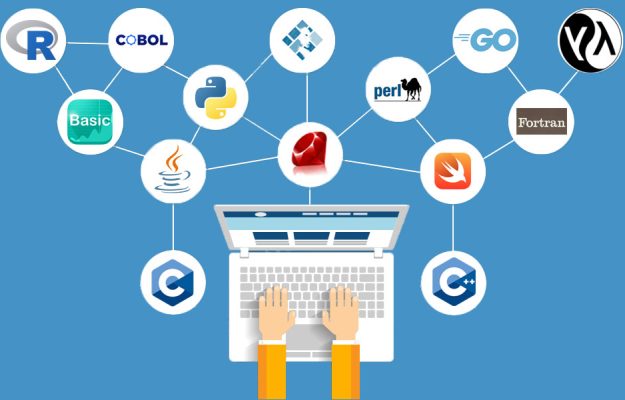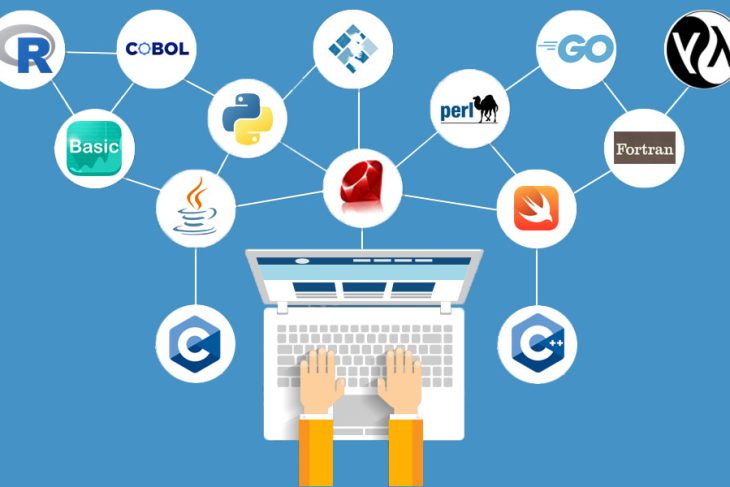

by admin
Exploring Strategies for Workforce Stability in the Tech Industry
The technology industry is known for its rapid pace of innovation and occasional fluctuations in demand, which can sometimes lead to workforce challenges. Rather than resorting to layoffs as a means of cost-cutting during lean periods, tech companies are increasingly seeking alternatives to maintain a […]
Industrial
by admin
Essential Lessons for e-Commerce Entrepreneurs: Avoiding Costly Mistakes
Launching an e-commerce business can be an exciting and potentially lucrative venture. However, navigating the competitive landscape and achieving success in the online marketplace requires careful planning and avoiding common pitfalls. In this article, we will discuss seven costly mistakes that e-commerce entrepreneurs must avoid […]
Startups
by admin
Unlocking the Advantages of Standing Desks in the Workplace
In recent years, standing desks have gained popularity as a healthier alternative to traditional seated workstations. Many office workers are embracing this ergonomic solution, recognizing the numerous benefits it brings to their well-being and productivity. This article explores the advantages of standing desks for office […]
Lifestyle
by admin
Achieving Work-Life Balance in a Startup: 5 Strategies for Success
Working at a startup can be an exhilarating experience, but it often comes with long hours, high pressure, and a fast-paced environment. Finding a balance between work and personal life becomes crucial to avoid burnout and maintain overall well-being. In this article, we will explore […]
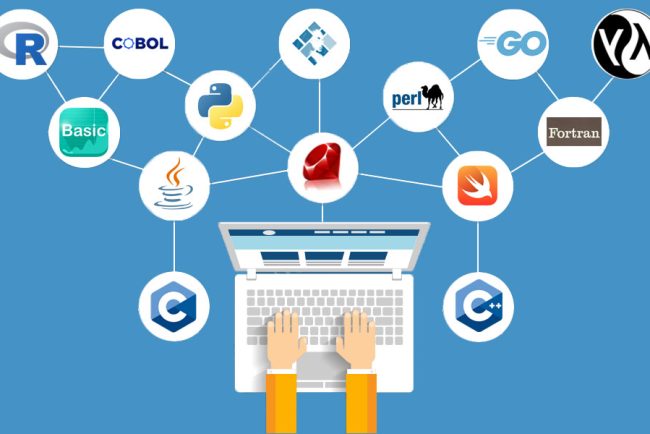
by admin
Exploring the Applications of Natural Language Processing (NLP) in Various Fields
As an Internet information blogger, I am fascinated by the potential of Natural Language Processing (NLP) and its impact on our daily lives. NLP is a technology that allows machines to understand and process human language, combining elements of linguistics, computer science, and artificial intelligence. […]
Industrial
by admin
The Transformation of Travel: Exploring the Impact of Connected Technology
In today’s digital age, connected technology is revolutionizing the way we travel. From planning our trips to navigating unfamiliar destinations, technology has become an integral part of our travel experiences. Let’s delve into how connected tech is changing the landscape of travel and enhancing our […]
Lifestyle
by admin
Exploring the Applications of Natural Language Processing (NLP) in Various Fields
As an Internet information blogger, I am fascinated by the potential of Natural Language Processing (NLP) and its impact on our daily lives. NLP is a technology that allows machines to understand and process human language, combining elements of linguistics, computer science, and artificial intelligence. […]
Industrial
by admin
The Transformation of Travel: Exploring the Impact of Connected Technology
In today’s digital age, connected technology is revolutionizing the way we travel. From planning our trips to navigating unfamiliar destinations, technology has become an integral part of our travel experiences. Let’s delve into how connected tech is changing the landscape of travel and enhancing our […]
Lifestyle
by admin
Building a Future-Ready Warehouse: Nurturing Connectivity and Automation
The concept of the warehouse of tomorrow represents a visionary approach to warehousing and distribution. It envisions warehouses designed with connectivity and automation at their core, promising enhanced efficiency and productivity in storage and fulfillment processes. To achieve this, companies need to focus on modernization […]
Industrial
by admin
Achieving Work-Life Balance in a Startup: 5 Strategies for Success
Working at a startup can be an exhilarating experience, but it often comes with long hours, high pressure, and a fast-paced environment. Finding a balance between work and personal life becomes crucial to avoid burnout and maintain overall well-being. In this article, we will explore […]
Startups
The Potential Risks: Exploring the Intersection of Coworking Spaces and IoT
by admin
Coworking spaces have revolutionized the way people work, providing flexible and collaborative environments for professionals from various industries. With the advent of the Internet of Things (IoT), these spaces are becoming even more connected and technologically advanced. However, along with the benefits of IoT integration […]
Smart Cities
Coworking spaces have revolutionized the way people work, providing flexible and collaborative environments for professionals from various industries. With the advent of the Internet of Things (IoT), these spaces are becoming even more connected and technologically advanced. However, along with the benefits of IoT integration in coworking spaces, there are potential risks and challenges that need to be addressed. In this article, we will explore the possible risks and considerations when combining coworking spaces with IoT technologies.
- Data Security and Privacy:
One of the primary concerns when integrating IoT in coworking spaces is data security and privacy. IoT devices are connected to the internet and collect and transmit vast amounts of data. This data may include sensitive information such as personal and professional data of individuals using the coworking space. It is crucial to implement robust security measures to protect this data from unauthorized access or cyberattacks. Additionally, clear policies and guidelines should be established regarding data collection, storage, and usage to ensure the privacy rights of individuals are respected.
- Network Vulnerabilities:
IoT devices rely on network connectivity to function and exchange data. Coworking spaces often provide shared networks for their members, which can pose security risks. If not properly secured, IoT devices within the coworking space can become entry points for malicious attacks, potentially compromising the entire network and the data of all users. Implementing network segmentation, strong authentication protocols, and regular security audits can help mitigate these risks and ensure the overall network security.
- Compatibility and Interoperability:
Coworking spaces are dynamic environments with individuals using various devices and technologies. Ensuring compatibility and interoperability among different IoT devices can be challenging. If coworking spaces adopt multiple IoT platforms or standards that are not compatible, it can lead to fragmentation and inefficiencies. Therefore, it is essential to select IoT devices and platforms that can seamlessly integrate with each other, providing a cohesive and user-friendly experience for all members.
- User Experience and Control:
IoT devices in coworking spaces should enhance the user experience and convenience without compromising individual control and autonomy. It is crucial to strike a balance between automation and user control. For example, smart lighting and temperature control systems should be customizable to meet individual preferences, ensuring a comfortable and personalized working environment. Additionally, clear guidelines should be established to address concerns related to device management, permissions, and the ability to opt-out of certain IoT features if desired.
- Ethical Considerations:
As IoT devices become more prevalent in coworking spaces, ethical considerations arise. Transparency and consent should be prioritized when collecting data from individuals using the coworking space. Members should be informed about the types of data collected, the purposes for which it will be used, and have the option to provide or withhold consent. Additionally, coworking spaces should ensure that IoT devices are used in a manner that respects privacy, diversity, and promotes inclusivity.
Conclusion:
The integration of IoT in coworking spaces brings exciting possibilities for increased productivity, efficiency, and enhanced user experiences. However, it is essential to address the potential risks and challenges associated with this convergence. By implementing robust security measures, ensuring compatibility and interoperability, prioritizing user control and privacy, and considering ethical implications, coworking spaces can leverage the power of IoT while safeguarding the interests and well-being of their members. With careful planning and implementation, coworking spaces can create a harmonious and technologically advanced environment that fosters collaboration, innovation, and a sense of community.

by admin
Avoiding Common Resume Mistakes: Empowering Women in the Job Market
In today’s competitive job market, a well-crafted resume is essential for standing out and securing employment opportunities. However, women often encounter specific challenges when it comes to resume writing. Gender biases, stereotypes, and societal expectations can impact how their qualifications and experiences are perceived by […]
Lifestyle
In today’s competitive job market, a well-crafted resume is essential for standing out and securing employment opportunities. However, women often encounter specific challenges when it comes to resume writing. Gender biases, stereotypes, and societal expectations can impact how their qualifications and experiences are perceived by employers. In this article, we will discuss common resume mistakes women make and provide strategies to help them overcome these obstacles and present their skills effectively.
- Downplaying Achievements: One common mistake women make on their resumes is downplaying their achievements. Due to societal conditioning, women may feel uncomfortable promoting themselves or fear being perceived as overly confident. To avoid this, women should confidently showcase their accomplishments, emphasizing their skills, projects, and contributions to previous employers or organizations.
- Overemphasizing Personal Information: Another mistake is including excessive personal information that is not relevant to the job application. While it’s important to provide contact details and professional affiliations, personal details such as marital status, age, or photographs should be omitted unless explicitly requested. Focus on highlighting qualifications, experiences, and transferable skills that directly relate to the job requirements.
- Neglecting to Quantify Achievements: Many resumes lack quantifiable data, which can make it challenging for employers to assess the impact of a candidate’s work. Women should strive to include measurable achievements whenever possible. For example, instead of simply stating “Managed a team,” quantify it by mentioning the number of team members, projects completed, or targets achieved under their leadership.
- Underrepresentation of Leadership Roles: Women often hesitate to showcase their leadership capabilities, which can be a disadvantage when applying for managerial or executive positions. It’s crucial to highlight leadership experiences, such as leading teams, spearheading initiatives, or organizing events. Including such experiences demonstrates confidence and the ability to take charge.
- Ignoring Keywords and Job Requirements: To increase the chances of resume shortlisting, it’s important to tailor the resume to each specific job application. Women should carefully read the job description, identify keywords, and incorporate them into their resume. This not only shows alignment with the job requirements but also improves the chances of their resume passing through applicant tracking systems.
- Lack of Networking and Referral Information: Networking is a vital aspect of job searching, and women should leverage their professional connections. Including referrals or networking information in the resume can be highly beneficial. If a mutual connection or referral is available, mention it in the application to establish credibility and strengthen the resume.
- Not Showcasing Transferable Skills: Women who are transitioning careers or returning to the workforce after a break often possess valuable transferable skills. It’s important to identify and highlight these skills, such as problem-solving, adaptability, communication, and leadership, to demonstrate their potential value to prospective employers.
By addressing these common resume mistakes, women can empower themselves in the job market and present their qualifications and experiences effectively. It’s essential to showcase achievements, quantify results, tailor resumes to specific job requirements, and leverage networking opportunities. Remember, a strong resume is a powerful tool for overcoming gender biases and securing rewarding career opportunities.
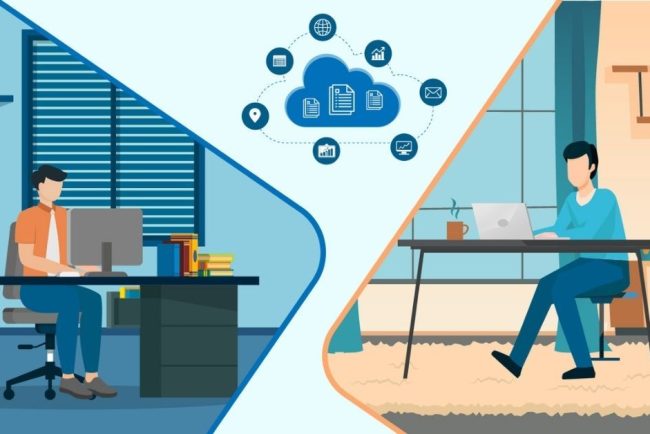
by admin
Boosting Employee Productivity: Effective Strategies to Enhance Performance
In today’s competitive business landscape, organizations strive to maximize employee productivity to stay ahead. Productivity plays a crucial role in achieving business objectives, improving profitability, and fostering growth. In this article, we explore various methods that can help increase employee productivity and drive organizational success. […]
Lifestyle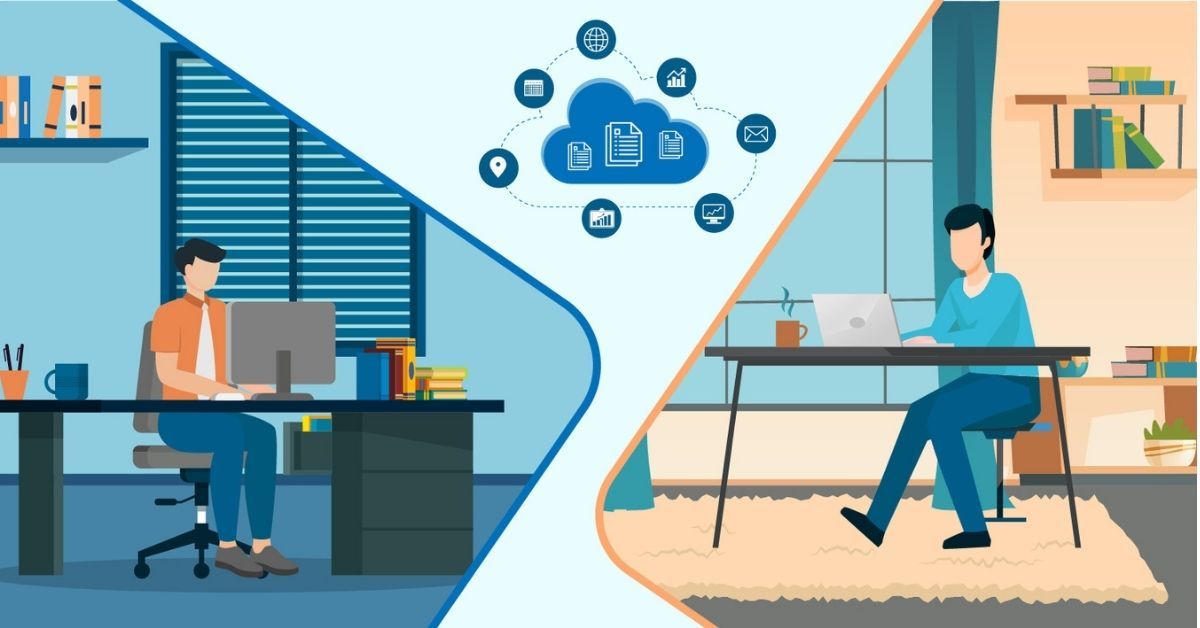
In today’s competitive business landscape, organizations strive to maximize employee productivity to stay ahead. Productivity plays a crucial role in achieving business objectives, improving profitability, and fostering growth. In this article, we explore various methods that can help increase employee productivity and drive organizational success.
- Establish Clear Goals and Expectations:
Setting clear goals and expectations is fundamental to drive employee productivity. When employees have a clear understanding of what is expected of them and the goals they are working towards, they are more motivated and focused on achieving desired outcomes. Effective communication of goals and regular feedback sessions can help align employees’ efforts with organizational objectives.
- Provide Adequate Training and Development Opportunities:
Investing in employee training and development is essential for enhancing productivity. By equipping employees with the necessary skills and knowledge, organizations enable them to perform their roles more effectively and efficiently. Training programs can cover various areas such as technical skills, leadership development, and personal growth, ensuring employees are equipped to handle their responsibilities with confidence.
- Foster a Positive Work Environment:
Creating a positive work environment plays a significant role in increasing employee productivity. When employees feel valued, supported, and engaged, they are more likely to be motivated and committed to their work. Encouraging teamwork, recognizing achievements, and promoting work-life balance can contribute to a positive workplace culture that enhances productivity.
- Implement Effective Time Management Strategies:
Time management is crucial for optimizing productivity. Encourage employees to prioritize tasks, set realistic deadlines, and avoid multitasking, which can hinder focus and efficiency. Providing tools and resources for effective time management, such as project management software or task management apps, can help employees stay organized and meet deadlines effectively.
- Promote Work-Life Balance:
Maintaining a healthy work-life balance is essential for sustaining high productivity levels. Encourage employees to take regular breaks, promote flexible work arrangements when possible, and discourage a culture of overworking. Supporting employees in achieving work-life balance contributes to their well-being, reduces burnout, and enhances overall productivity.
- Recognize and Reward Performance:
Recognizing and rewarding employee performance is a powerful motivator that boosts productivity. Celebrate individual and team achievements, whether through verbal appreciation, performance-based bonuses, or other recognition programs. By acknowledging employees’ hard work and dedication, organizations foster a culture of excellence and encourage continuous improvement.
Conclusion:
Increasing employee productivity requires a multi-faceted approach that focuses on clear goal-setting, continuous development, a positive work environment, effective time management, work-life balance, and recognition of performance. By implementing these strategies, organizations can create a motivated workforce that consistently delivers results and contributes to the overall success of the company.

by admin
Cutting Costs and Eliminating Errors with Automated Inventory Management Software
In today’s fast-paced business environment, efficient inventory management is crucial for the success of any organization. Manual inventory management processes are prone to costly errors, such as stockouts, overstocking, and inaccurate data recording. However, the advent of automated inventory management software has revolutionized the way […]
Industrial
In today’s fast-paced business environment, efficient inventory management is crucial for the success of any organization. Manual inventory management processes are prone to costly errors, such as stockouts, overstocking, and inaccurate data recording. However, the advent of automated inventory management software has revolutionized the way companies handle their inventory. By streamlining operations and minimizing errors, these software solutions offer significant cost-saving opportunities. In this article, we will explore how automated inventory management software can help businesses optimize their inventory control and reduce expenses.
Streamlined Operations: Automated inventory management software simplifies and accelerates inventory-related tasks. It enables companies to track and manage their inventory in real-time, providing accurate visibility into stock levels, sales data, and order fulfillment. By automating tasks such as inventory tracking, replenishment, and order management, businesses can eliminate manual errors and reduce the time required to complete these processes. The software’s advanced algorithms also assist in demand forecasting, ensuring optimal stock levels and preventing stockouts or overstocking.
Error Reduction: Manual inventory management processes are highly susceptible to human errors. Miscounting, incorrect data entry, and misplaced items can lead to significant financial losses. Automated inventory management software minimizes these errors by providing a centralized database that synchronizes information across various systems. Barcode scanning and RFID technology further enhance accuracy by reducing the risk of data entry mistakes. The software’s automated alerts and notifications also help identify discrepancies, such as stock discrepancies or expired items, before they escalate into more significant issues.
Cost Savings: Implementing automated inventory management software offers several cost-saving benefits. First and foremost, it reduces the need for excessive safety stock levels, as accurate demand forecasting ensures optimal inventory levels. This helps free up valuable warehouse space and minimizes inventory holding costs. Moreover, by automating inventory-related tasks, businesses can reduce labor costs associated with manual counting, data entry, and reconciliation processes. The software’s ability to prevent stockouts and overstocking also eliminates potential losses due to missed sales or obsolescence.
Enhanced Efficiency: Efficiency is a key factor in inventory management, as it directly impacts customer satisfaction and overall business performance. Automated inventory management software enables businesses to fulfill customer orders quickly and accurately, leading to improved customer service and retention. Real-time visibility into inventory levels and order statuses allows for efficient order processing and timely replenishment. Furthermore, the software’s analytical capabilities provide valuable insights into inventory performance, allowing businesses to identify and eliminate bottlenecks, optimize stock allocation, and streamline supplier relationships.
Conclusion: Automated inventory management software has become an indispensable tool for businesses seeking to optimize their inventory control processes. By streamlining operations, reducing errors, and enhancing efficiency, this software offers significant cost-saving opportunities. Companies that implement such solutions can benefit from accurate demand forecasting, reduced labor costs, improved customer service, and enhanced overall performance. As technology continues to advance, automated inventory management software will undoubtedly play a vital role in helping businesses stay competitive in the dynamic marketplace.

by admin
Unleashing the Power of Remote Work: Embracing the Future of Hybrid Work
The COVID-19 pandemic has revolutionized the way we work, accelerating the adoption of remote work practices across industries. As we move towards a post-pandemic era, the concept of hybrid work, which combines both remote and in-person work, is gaining prominence. In this article, we delve […]
Lifestyle
The COVID-19 pandemic has revolutionized the way we work, accelerating the adoption of remote work practices across industries. As we move towards a post-pandemic era, the concept of hybrid work, which combines both remote and in-person work, is gaining prominence. In this article, we delve into the future of hybrid work, exploring its potential and the benefits it can bring to organizations and employees.
The Rise of Hybrid Work:
Hybrid work refers to a flexible work model that allows employees to divide their time between remote work and in-person collaboration. It provides the best of both worlds, offering the freedom and flexibility of remote work while maintaining the benefits of face-to-face interactions and teamwork.
Unlocking Potential:
- Work-Life Balance: Hybrid work enables individuals to better balance their personal and professional lives. By eliminating the need for daily commutes and providing flexibility in work hours, employees can allocate more time to family, hobbies, and self-care, resulting in improved overall well-being and job satisfaction.
- Increased Productivity: Studies have shown that remote work can lead to increased productivity due to fewer distractions and the ability to create personalized work environments. By allowing employees to choose where and when they work best, hybrid work empowers them to optimize their productivity and deliver quality results.
- Cost Savings: Hybrid work can bring substantial cost savings for both employees and organizations. With reduced commuting expenses, lower office space requirements, and potential savings on meals, employees can enjoy improved financial well-being. Likewise, organizations can benefit from reduced overhead costs associated with maintaining large office spaces.
- Talent Acquisition and Retention: Embracing hybrid work opens up opportunities for organizations to attract and retain top talent. By offering flexible work arrangements, companies can tap into a broader pool of skilled professionals who may prefer the flexibility and work-life integration that hybrid work provides. This can result in a more diverse and inclusive workforce.
Challenges and Solutions:
While hybrid work offers numerous advantages, it also presents challenges that need to be addressed. Some common challenges include maintaining effective communication, ensuring equitable opportunities for remote and in-person employees, and managing work-life boundaries. Organizations can overcome these challenges by implementing robust communication tools, fostering a culture of inclusivity, and providing resources and support for employees to establish healthy work-life boundaries.
The Future Outlook:
As organizations adapt to the post-pandemic landscape, hybrid work is poised to become the new norm. It allows organizations to leverage technology, embrace flexibility, and harness the power of remote collaboration. By adopting a hybrid work model, companies can build resilience, improve employee satisfaction, and drive innovation.
Conclusion:
The future of work is evolving, and hybrid work is at the forefront of this transformation. By combining the best aspects of remote and in-person work, organizations can unlock the potential of their workforce and create a more flexible and productive work environment. As we navigate the new era of work, embracing hybrid work is not only a strategic decision but also a way to empower employees and foster a culture of adaptability and inclusivity.

by admin
Unlocking the Potential: Smart Data Exchange Driving Innovation in Smart Cities
The rapid advancement of technology has given rise to the concept of smart cities, where data-driven solutions and innovations are used to enhance the quality of life for residents. In this article, we will explore how smart data exchange is playing a crucial role in […]
Smart Cities
The rapid advancement of technology has given rise to the concept of smart cities, where data-driven solutions and innovations are used to enhance the quality of life for residents. In this article, we will explore how smart data exchange is playing a crucial role in driving innovation and creating value in smart cities.
The Power of Smart Data Exchange:
Smart data exchange refers to the seamless flow of data between various systems and stakeholders within a smart city ecosystem. It involves collecting, analyzing, and sharing data from different sources such as sensors, devices, and databases. By leveraging this data, smart cities can gain valuable insights and make informed decisions to optimize resource allocation, improve efficiency, and enhance the overall urban experience.
- Enhancing Urban Services:
Smart data exchange enables the integration of various urban services, such as transportation, energy, waste management, and public safety. By sharing data across these domains, cities can optimize operations and deliver more efficient and sustainable services. For example, real-time traffic data can be used to optimize traffic flow, reduce congestion, and enhance public transportation systems. Similarly, data from energy consumption patterns can help cities identify opportunities for energy savings and promote renewable energy integration.
- Facilitating Collaboration and Innovation:
Smart data exchange fosters collaboration among different stakeholders, including government agencies, businesses, research institutions, and citizens. By sharing data, these entities can collaborate on solving complex urban challenges and drive innovation. For instance, startups and entrepreneurs can access relevant data to develop innovative solutions for urban mobility, waste management, or energy efficiency. The availability of data promotes a vibrant ecosystem of innovators working towards common goals.
- Improving Decision-Making:
Data-driven decision-making lies at the core of smart cities. Smart data exchange provides decision-makers with accurate and timely information, enabling them to make informed choices. For instance, city planners can utilize data on population trends, energy consumption, and environmental factors to develop sustainable urban development plans. Real-time data from IoT sensors can also help in proactively identifying and addressing issues such as air pollution, water management, or emergency response.
- Enhancing Citizen Engagement:
Smart data exchange empowers citizens by providing them access to relevant information and enabling their active participation in city governance. Open data initiatives allow citizens to access and utilize public data for various purposes, including developing applications, conducting research, or engaging in civic activities. Citizen feedback and data generated through social media and mobile applications can also provide valuable insights to improve services and address community needs.
Conclusion:
Smart data exchange is revolutionizing the way cities operate and innovate. By leveraging the power of data, smart cities can optimize resource allocation, improve urban services, foster collaboration, and enhance citizen engagement. However, it is crucial to address concerns related to data privacy, security, and ethical use to build trust among stakeholders. As technology continues to evolve, smart data exchange will play an increasingly pivotal role in shaping the future of smart cities, driving innovation, and creating value for both residents and businesses.

by admin
Revolutionizing Construction: 6 Remarkable Applications of AI
In recent years, the construction industry has witnessed a technological revolution, with artificial intelligence (AI) playing a pivotal role in transforming traditional practices. From enhancing safety measures to optimizing project management, AI has opened up new possibilities for the construction sector. In this article, we […]
Industrial
In recent years, the construction industry has witnessed a technological revolution, with artificial intelligence (AI) playing a pivotal role in transforming traditional practices. From enhancing safety measures to optimizing project management, AI has opened up new possibilities for the construction sector. In this article, we will explore six amazing ways AI is being utilized in construction, revolutionizing the industry and shaping the future of building projects.
- Predictive Analytics for Risk Management AI-powered predictive analytics is revolutionizing risk management in construction. By analyzing vast amounts of historical data, AI algorithms can identify potential risks and predict their likelihood of occurrence. This proactive approach enables construction companies to implement preventive measures, mitigate risks, and enhance overall project safety. AI algorithms can also provide real-time risk assessments during ongoing construction, alerting stakeholders to potential hazards and enabling timely interventions.
- Autonomous Heavy Equipment and Robotics AI-driven autonomous heavy equipment and robotics are transforming construction sites. Self-driving construction vehicles, such as excavators and bulldozers, equipped with AI algorithms and sensors, can navigate construction sites and perform tasks with precision and efficiency. These autonomous machines reduce human errors, enhance productivity, and improve worker safety. Additionally, robotic systems powered by AI can handle repetitive or dangerous tasks, such as bricklaying or welding, with speed and accuracy.
- Construction Planning and Optimization AI technology is revolutionizing construction planning and optimization processes. AI algorithms can analyze project data, including architectural designs, materials, and scheduling constraints, to generate optimized construction plans. By considering factors like resource allocation, material usage, and workflow efficiency, AI can propose construction schedules that minimize delays, reduce costs, and maximize productivity. These AI-driven planning tools enable construction companies to streamline project execution and achieve better outcomes.
- Quality Control and Defect Detection AI-based image recognition and computer vision techniques are revolutionizing quality control in construction. By analyzing images and video feeds from construction sites, AI algorithms can detect defects, identify deviations from specifications, and flag potential issues. This automated defect detection process saves time, improves accuracy, and ensures adherence to quality standards. It enables early intervention and reduces the risk of costly rework or delays caused by undetected defects.
- Energy Efficiency and Sustainability AI is driving advancements in energy efficiency and sustainability in construction. Machine learning algorithms can analyze building designs and energy consumption patterns to optimize energy usage and reduce carbon footprint. AI-powered systems can monitor and control energy-intensive components, such as HVAC systems or lighting, based on real-time data and occupancy patterns, ensuring energy efficiency without compromising comfort. Furthermore, AI can assist in identifying sustainable materials, optimizing waste management, and facilitating green building practices.
- Construction Site Safety Monitoring AI is enhancing safety monitoring on construction sites through the utilization of advanced sensors and computer vision. AI algorithms can analyze sensor data and video feeds in real-time to identify potential safety hazards. This includes detecting unauthorized personnel in restricted areas, monitoring compliance with safety protocols, and identifying potential accidents or unsafe conditions. By providing instant alerts and actionable insights, AI-powered safety monitoring systems contribute to a safer working environment for construction workers.
As the construction industry continues to embrace AI, these six remarkable applications are reshaping traditional practices, improving efficiency, and enhancing safety. The integration of AI technologies into construction processes holds immense potential for future advancements in the sector.

by admin
The Growing Attraction: Why IoT Leaders Are Turning Their Attention to Tampa
In recent years, Tampa has emerged as a hotspot for IoT (Internet of Things) leaders and innovators. This vibrant city in Florida has been drawing the attention of industry experts and entrepreneurs due to its unique advantages and opportunities. In this article, we will explore […]
Smart Cities
In recent years, Tampa has emerged as a hotspot for IoT (Internet of Things) leaders and innovators. This vibrant city in Florida has been drawing the attention of industry experts and entrepreneurs due to its unique advantages and opportunities. In this article, we will explore six compelling reasons why IoT leaders are focusing their efforts on Tampa.
- Thriving Tech Ecosystem:
Tampa boasts a thriving tech ecosystem that provides a fertile ground for IoT companies to flourish. The city is home to a diverse range of technology-focused organizations, including research institutions, startups, incubators, and accelerators. This vibrant ecosystem fosters collaboration, knowledge sharing, and the exchange of ideas, making it an attractive destination for IoT leaders seeking a supportive environment to grow their businesses.
- Strategic Geographic Location:
Tampa’s strategic geographic location offers significant advantages for IoT leaders. Situated on the western coast of Florida, Tampa provides easy access to major markets in the United States and Latin America. Its proximity to key transportation hubs and its well-connected infrastructure make it an ideal location for IoT companies to expand their operations and reach a wider customer base.
- Business-Friendly Environment:
Tampa prides itself on its business-friendly environment, characterized by favorable tax policies, supportive government initiatives, and a low cost of living compared to other tech-centric cities. The city’s commitment to fostering innovation and entrepreneurship has attracted numerous IoT leaders who appreciate the conducive atmosphere for growth and investment.
- Skilled Workforce:
Tampa is home to a highly skilled and diverse workforce, offering a pool of talent for IoT companies to tap into. The presence of renowned universities and educational institutions in the area ensures a steady supply of graduates with expertise in fields such as engineering, computer science, and data analytics. This abundance of skilled professionals enables IoT leaders to assemble high-performing teams and drive innovation.
- Infrastructure and Connectivity:
IoT relies on robust infrastructure and seamless connectivity, both of which Tampa excels in providing. The city boasts advanced telecommunications networks, reliable internet connectivity, and a strong digital infrastructure. This infrastructure supports the seamless integration of IoT technologies and enables businesses to leverage the power of connected devices and data-driven solutions.
- Collaborative Ecosystem:
Tampa fosters a collaborative ecosystem that encourages partnerships and knowledge sharing among industry players. The city hosts numerous networking events, conferences, and meetups focused on IoT and related technologies. These platforms provide opportunities for IoT leaders to connect with like-minded professionals, forge strategic alliances, and stay abreast of the latest industry trends and innovations.
Conclusion:
Tampa has become a magnet for IoT leaders, and for good reason. Its thriving tech ecosystem, strategic location, business-friendly environment, skilled workforce, robust infrastructure, and collaborative ecosystem make it an ideal destination for IoT companies to establish their presence and drive innovation. As IoT continues to transform industries, Tampa is poised to become a hub for IoT innovation and a key player in shaping the future of connected technologies.

by admin
Exploring the Viability of Crowdfunding for Startup Success
Crowdfunding has gained popularity as an alternative method for startups to raise capital and engage with potential customers. This innovative approach allows entrepreneurs to pitch their ideas to a wide audience and secure financial support from individuals or groups. However, before embarking on a crowdfunding […]
Startups
Crowdfunding has gained popularity as an alternative method for startups to raise capital and engage with potential customers. This innovative approach allows entrepreneurs to pitch their ideas to a wide audience and secure financial support from individuals or groups. However, before embarking on a crowdfunding campaign, it is essential for startups to evaluate whether this funding method is a good fit for their business goals and circumstances. In this article, we will delve into the considerations surrounding crowdfunding for startups and assess its viability as a fundraising strategy.
Understanding Crowdfunding: Crowdfunding is the practice of raising funds from a large number of people, typically through online platforms. It offers various models, including donation-based crowdfunding, reward-based crowdfunding, equity crowdfunding, and lending-based crowdfunding. Each model presents its own advantages and challenges, catering to different startup needs and objectives.
Benefits of Crowdfunding:
- Access to Capital: One of the primary benefits of crowdfunding is the potential to secure funding from a broad audience, including individuals who may be passionate about the startup’s mission or product. This democratized approach to fundraising can provide startups with the financial resources they need to launch or scale their ventures.
- Market Validation: Crowdfunding campaigns can serve as a litmus test for startups, enabling them to gauge market demand and validate their ideas. Positive responses and financial contributions from backers indicate that there is interest in the product or service, providing valuable feedback and validation to attract future investors or customers.
- Marketing and Publicity: Crowdfunding campaigns inherently generate buzz and media attention. By leveraging the crowdfunding platform’s built-in marketing tools and utilizing social media channels, startups can raise awareness about their brand, product, or mission. The campaign acts as a promotional vehicle, potentially attracting additional customers and investors.
Considerations for Startups:
- Time and Resources: Launching a successful crowdfunding campaign requires significant time and effort. Startups must invest in creating compelling campaign content, designing appealing rewards (for reward-based crowdfunding), and developing a comprehensive marketing strategy. It is crucial to assess whether the team has the capacity to dedicate resources to run an effective campaign.
- Competitive Landscape: Crowdfunding platforms have become increasingly crowded, with numerous campaigns vying for attention and financial support. Startups must carefully analyze the competitive landscape within their industry and consider whether their value proposition and marketing efforts can stand out among the competition.
- Investor Relations and Accountability: Engaging with a large pool of backers comes with responsibilities. Startups must be prepared to communicate and maintain transparent relationships with their investors, providing regular updates on progress, addressing concerns, and fulfilling any promises made during the campaign. This ongoing investor relations aspect requires time and commitment.
Conclusion: While crowdfunding can be a viable fundraising option for startups, it is crucial to carefully evaluate its suitability for individual circumstances. Startups must assess their financial needs, marketing capabilities, and readiness to manage investor relations. Additionally, thorough research into the different crowdfunding models and platforms is essential to choose the most appropriate approach. By considering these factors, startups can make an informed decision about whether crowdfunding aligns with their goals and can contribute to their long-term success.

by admin
The Persistence of Power Outage Downtime: Why Haven’t We Found a Solution Yet?
Power outages have long been a source of frustration and inconvenience for individuals and businesses alike. Despite advances in technology and infrastructure, we still find ourselves grappling with the consequences of power disruptions. In this article, we will delve into the reasons why we continue […]
Smart Cities
Power outages have long been a source of frustration and inconvenience for individuals and businesses alike. Despite advances in technology and infrastructure, we still find ourselves grappling with the consequences of power disruptions. In this article, we will delve into the reasons why we continue to endure power outage downtime and explore the challenges involved in finding a lasting solution.
- Aging Infrastructure:
One of the primary reasons we still experience power outage downtime is the aging infrastructure of our electrical grids. Many countries and regions rely on outdated power systems that were built decades ago. These systems are susceptible to faults, failures, and disruptions caused by weather events, equipment malfunctions, and other unforeseen circumstances. Upgrading and modernizing the infrastructure requires significant investment and time, making it a complex challenge.
- Growing Energy Demand:
The demand for electricity has been steadily increasing due to population growth, urbanization, and the proliferation of electronic devices. The strain on existing power systems to meet this growing demand often leads to overloading, which can result in power outages. Balancing the supply and demand of electricity is a delicate task, requiring careful planning, forecasting, and investment in new power generation and distribution technologies.
- Vulnerability to Natural Disasters:
Power grids are particularly vulnerable to natural disasters such as hurricanes, earthquakes, and severe storms. These events can cause significant damage to electrical infrastructure, leading to widespread power outages. While efforts are made to reinforce and protect power systems against natural disasters, the scale and intensity of these events can still overwhelm the existing safeguards. Enhancing the resilience of power grids to withstand such disasters remains a significant challenge.
- Maintenance and Upkeep:
Regular maintenance and upkeep of power infrastructure are crucial to prevent failures and minimize downtime. However, inadequate funding and limited resources often result in deferred maintenance or reactive repairs rather than proactive measures. Insufficient investment in maintenance can increase the likelihood of power outages and prolong downtime when failures occur.
- Complex Interdependencies:
The modern power grid is a complex network of interconnected systems, including generation plants, transmission lines, substations, and distribution networks. Any disruption in one part of the system can have cascading effects on other components, leading to widespread power outages. Identifying and addressing vulnerabilities and interdependencies within the grid requires coordination among multiple stakeholders, including utility companies, regulators, and government agencies.
Conclusion:
Despite the advancements in technology and infrastructure, power outage downtime continues to be a persistent problem. The challenges of aging infrastructure, growing energy demand, vulnerability to natural disasters, maintenance issues, and complex interdependencies make finding a comprehensive solution complex. However, efforts are being made to address these challenges through investments in renewable energy sources, grid modernization, and resilience planning. As we continue to navigate these complexities, collaboration between stakeholders and a commitment to innovation and sustainability will be key in minimizing power outage downtime and ensuring a reliable and resilient energy future.








